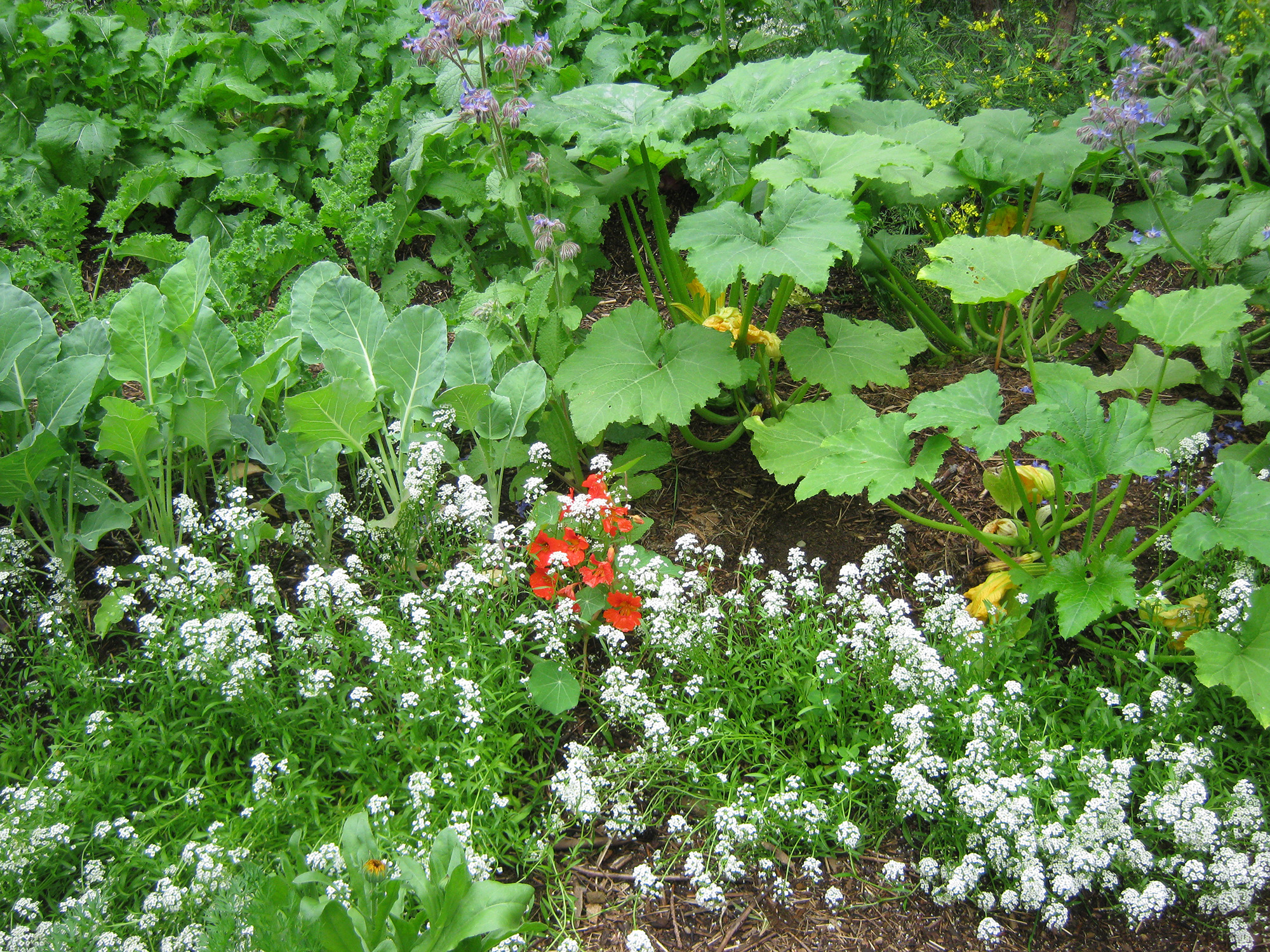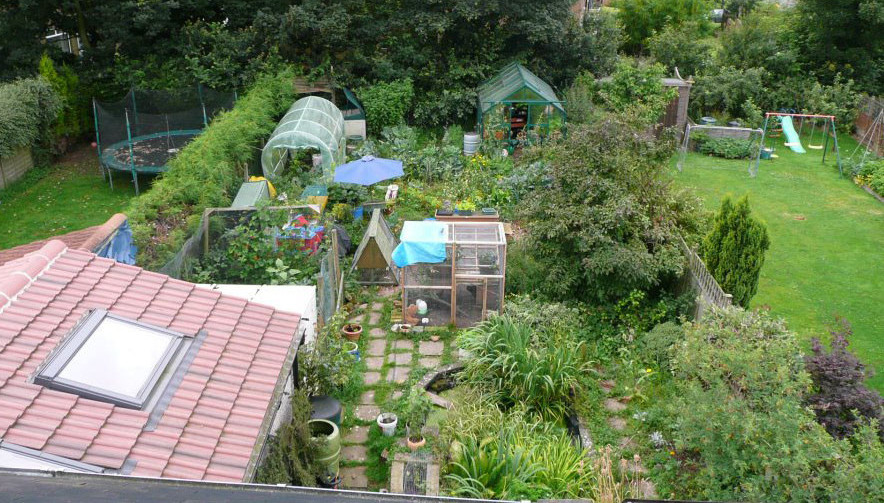I had the last property I lived on completely and brilliantly designed…in my head. I could see every pond and food forest and garden bed laid out just where I wanted. I had the chickens and gardens beautifully integrated; and swales and fish-growing ponds all mapped out.
Alas, it was not to be. I had to leave that property, my garden, and my dreams. But I haven’t given up the dream of having a property of my own one day, where I can put all that I have discovered in my permaculture journey to good use.
I would love to be a permaculture designer someday. How cool would it be to go around designing all different kinds of property? I think I will do a good job of it; but I need to get more design experience under my belt before I would feel confident doing it for money.
In the meantime, I continue to learn all I can, practice as many permaculture principles as possible, and work toward that dream property I can see in my mind’s eye. And I have a fun habit of designing other people’s property in my head.
Honing your design eye
There is no permaculture rule that says you have to own a property to think of a design for it. I love practicing my design skills on all kinds of property I see, and imagining how I would set it up. Where is the best place for a pond? Where would the swales work best? Where are the gardens going to go?
One of my favorite parts of designing is working out how to integrate systems so they work together. I like to imagine how the chickens will help in the garden, and how the greywater systems will water the food forest. It’s like a big puzzle. And the more we practice the better we’ll get.

Integrating systems
A large part of learning about permaculture systems is learning how to put them together so that each part supports and is supported by other parts of the system. This is what makes a good permaculture system tick.
The garden and the chicken-run are commonly used as an example of integrated systems. The chickens eat garden scraps, and scratch through the compost and bedding, and manure it. The compost and bedding goes into the garden.
Chickens can also be let into the garden for short periods of time to eat pests. And there are many more advantages to putting chickens and gardens in close proximity.
There are other permaculture systems that work well together. For instance, swales and ponds are put in to help hydrate the land and make it resilient in the face of drought.
Swales are also excellent tree growing systems; and the trees help reduce evaporation and erosion, as well as create soil. Ponds can be used to grow fish, to provide water for the household and gardens, and for growing aquatic plants such as water chestnuts.
The ducks and geese that live on and near the pond add their manure, making it quite rich for watering food forests and gardens. Ducks are excellent for keeping slug populations down; and geese are great for cleaning up fallen fruit in the food forest, which helps break pest cycles.
Larger animals can be integrated into the systems as well. Goats are excellent for clearing difficult shrubs such as prickly blackberry brambles; and in turn provide milk and meat. Cows and horses provide many services, not the least of which is their manure, which is excellent for the garden.
Do you see all the connections I’ve made between the different aspects of the design? That’s what happens in nature. Everything is connected, and nothing is left out of the design.
And that’s where permaculture really shines: we work hard to make those connections, and make the system practically run itself.

Drawing the design
I am lucky in that I am a graphic designer, and an artist. I have software that is great for creating permaculture designs in some detail; but I also enjoy drawing them out on paper. You can use whatever software you’re comfortable with; or just go the pencil and paper route, with colored pencils or pens for refining the design.
If you can, start with some measurements of the land. But you can sketch out a general design with the basic shape of the property to start with, when you’re just getting started.
I always think of the water systems first. They are the most important, in my opinion, and should be laid out before anything else. You’ll need water to get your growing systems going, so get that sorted out at the beginning.
Access is the next thing to consider. This includes things like driveways, forest trails, and machinery access throughout the property. Thinking about where you might need to drive a tractor or a pickup will definitely save you trouble in the future. And be sure to place your roads in such a way as to take advantage of their rain runoff – be sure to direct it to your swales or ponds.
Now that you’ve got your water and access planned, you can put in your gardens, buildings, and animal paddocks, as well as food forests. There will always be little details to add in later. But first you need to get the big stuff in place.
From what I have seen, designing the property on paper is the easy part. Getting people to do what you ask them to do on a larger design is another story.

Implementing a permaculture design
When it comes to the actual implementation of a permaculture design, you might need to look for people to help that will really listen to what you want done.
For instance, you might need to find an excavator operator to dig swales and ponds. Now, swales need to be dug a particular way. They need to be dug on contour, and the bottom of the swale needs to be level.
Ponds are even more exacting. They need to be constructed so that they are safe and will stand the test of time.
The person you hire to do the machine work needs to understand what it is you want, and why you want it that way. It is frustrating trying to convince someone who has “Done this for 20 years!” and doesn’t understand why you want what you want. But keep at it. It’s important that it is done right, and if you have to go through a few people to find the right one, then that’s just the way it is.

Placing things on contour isn’t done just for fun. There are good reasons for doing it, and if you are going to be dealing with workers who are new to the concept, you’ll have to work out a way to get your point across in a way they’ll understand.
It might be a good idea to write it all down – and include diagrams – so that you don’t forget anything while you’re explaining it. The good thing is that, if you decide to do permaculture designing for a living, you can use the same workers on each job, because you’ll have them trained!
Machine operators aren’t the only people you’ll have to deal with. Builders can be just as stubborn when faced with new ideas. Natural building is quite different from regular construction in many ways, and finding help with that can be a little trickier than finding regular carpenters.
The bottom line is, when dealing with laborers, machine operators, carpenters, etc. you need to stick to your guns. Be confident in your design, and sure in your ideas; and don’t let anyone talk you out of doing things the ‘permaculture’ way.
Once you’ve got all of your workers on board, you’re half-way there. Now you just need to execute each part of the design in the right order, and hope you can coordinate everyone! What fun. HA!
Trust your vision
There are multiple ways to design a property. A lot depends on what the people who are living there want to do with it. Maybe having lots of gardens is the main goal. Perhaps ponds for growing fish is what is wanted. Or maybe most of the property will be put into food forests.
The design will evolve from the potential of the property, and the needs of the owners. Asking lots of questions at the beginning will enable you to learn their dreams, and see the property through their eyes.
Get all the information you can, and then let your imagination and creativity help you make the best design for that property. Take that blank slate and turn it into something magical.

If you enjoyed this article, please leave a comment below, sharing your experiences or questions. I love hearing how people are integrating permaculture into their lives.
Health, Hope & Happiness
Tracy


Hello Tracy, with all have read about this post, i just find it really amazing and i think vision is all that we need to get things done and running. Like you said because you don’t own it doesn’t stop you from making the most of it. I love the ideas of this article and I must say the integrated design is very cool and i love the opinion about making use of chicken to do some little help in the yard. Cheers
Glad you enjoyed the post, Justin.
I think learning permaculture is a very important aspect of learning to take care of ourselves and our planet. And if I can get a few people on board with my articles on this site, I will be a happy girl. I hope you take a look at some of the other posts, and learn more about permaculture.
Cheers
Tracy